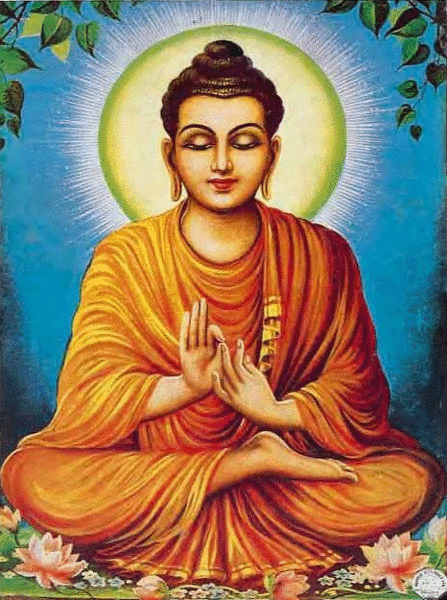Week 10 Reading: Twenty Jataka Tales, Part A
 |
| Image of Buddha on Wikimedia |
This week, I read Twenty Jataka Tales for my reading notes posts. I chose this unit because I liked the Jataka tales that we read as a class at the beginning of the semester. I was reminded that a Jataka tale is one about a life of the Buddha. All of these tales give lessons to be learned and the majority are “happily ever after” tales. The main theme running through this unit was the power of kindness. In each of the Buddha’s lives, he is selfless and has a sweet disposition so that no human wishes to do him harm. He has the power to change the way others perceive the world, and he teaches them the kindness that is natural to him. In January, I visited a Buddhist temple for a class assignment. I participated in meditation, and the feeling of calm that permeated that exercise is very similar to how the Buddha is portrayed in this unit.
In The Monkey-Bridge, a monkey king uses his own body as part of an escape bridge to avoid humans that are planning to kill his followers. When the king who ordered the monkeys’ murders learns that the monkey king sacrificed himself and broke his back in order to save his subjects, the king grew sad for the monkey. The king mourned the monkey’s death and made his people do the same. This tale is similar to Banyan in which a golden deer sacrifices himself for a doe who has a baby. When the king who had planned on killing the deer learns of the golden deer’s sacrifice for another, his heart fills with love, as is what happened in the previous tale. The golden deer convinces the king to kill no more deer. When the king agrees to this, the golden deer asks for more and he eventually secures the safety of all creatures in the kingdom.
The most interesting story of the unit for me was The Master’s Test. In this tale, a Master asks his pupils to go and steal some money for him while no one is watching. All but one child agrees, and when the child who did not agree is questioned as to why he would not steal the money, he replied that one’s self is always watching. This was an intriguing concept because although it seems evident enough, I do not think that most people would think this way. Most people would consider themselves as being apart from everyone else.
If you would like to read these Jataka tales, click here: link.
Comments
Post a Comment